Before ECP
How is Renew™ ECP Therapy performed?
After a full client assessment, Renew™ ECP Therapy is administered by a trained Renew™ ECP Therapist.
- A trained therapist wraps compression cuffs around the patient’s calves, thighs, and hips.
- ECG electrodes and a Finger Plethysmograph sensor are attached to synchronise the compressions with the patient’s heartbeat.
- The cuffs inflate and deflate rhythmically, boosting blood flow from the patient’s legs to their heart, helping to form new blood vessels and improve circulation.
This process creates “natural bypasses” around blocked arteries, optimising blood flow and significantly enhancing the client’s overall health.
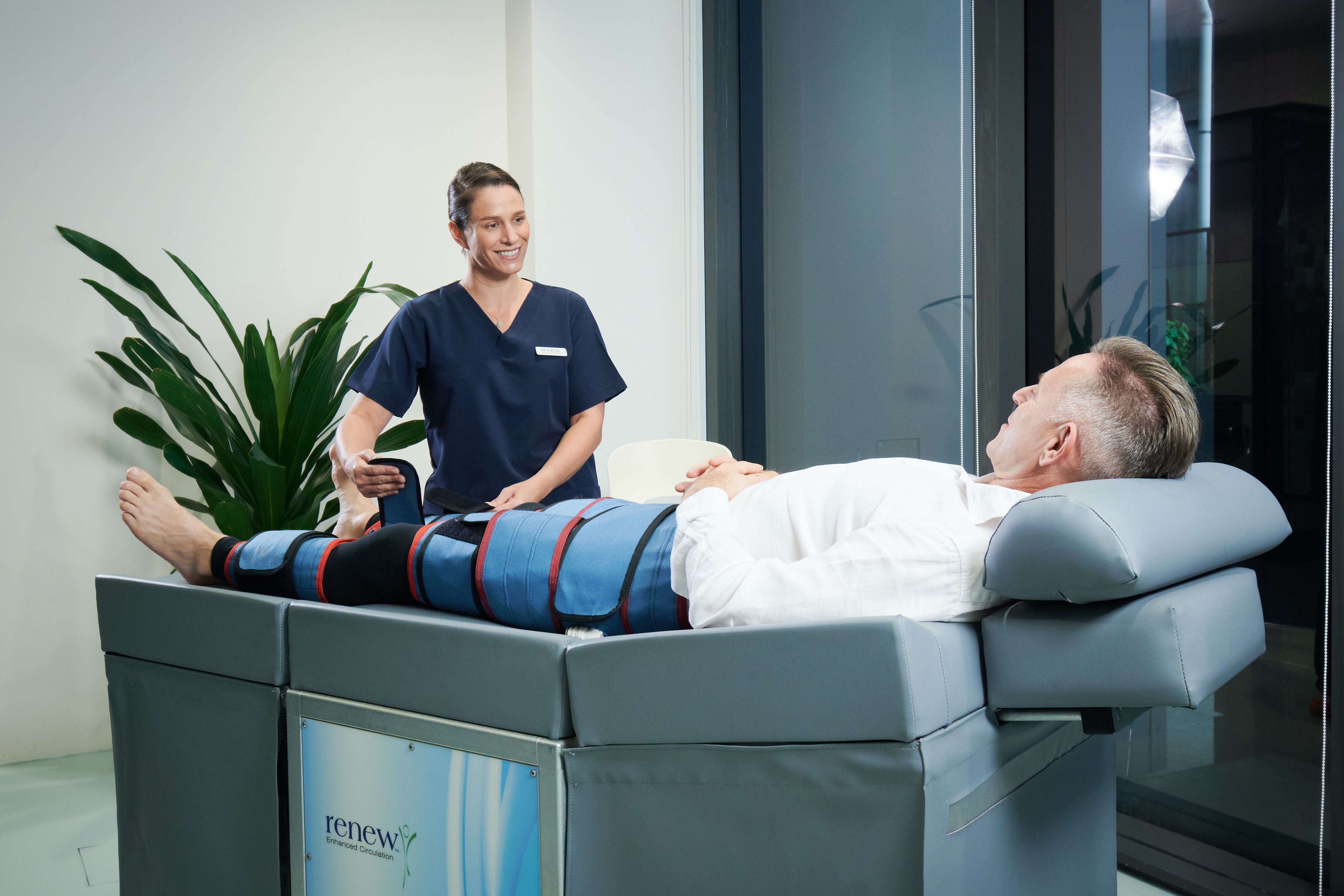
During ECP
What Happens During Treatment?
Four step ECP Therapy process
The cuffs inflate sequentially from calves to hips, pushing blood toward the heart to improve circulation. This rhythmic, massage-like pressure boosts oxygenated blood flow, opens collateral arteries, and reduces the heart’s workload. It enhances diastolic pressure, supporting cardiovascular health and other organ functions.
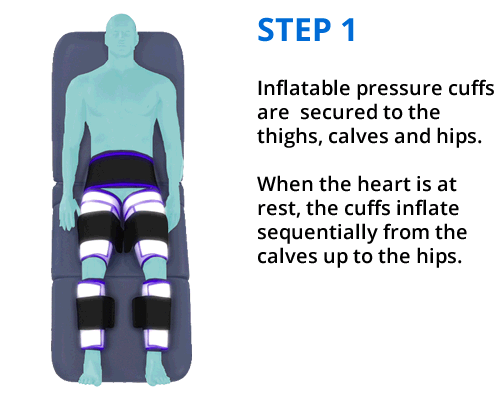
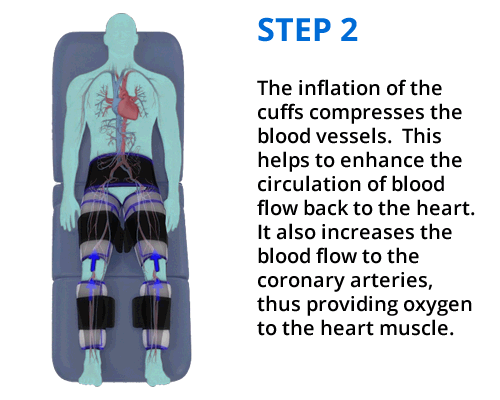
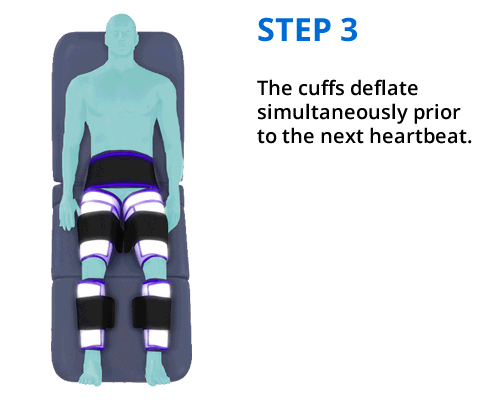
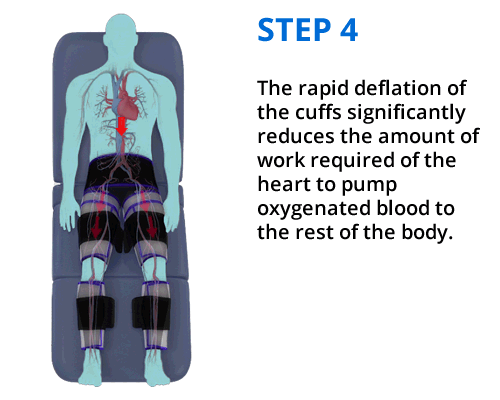
After ECP
How the Body Responds to Treatment
Safe
A Stronger Heart
Source
Improved Vascular Function
Limitless
Reduced Inflammation and Stress
Contraindications
Who is Renew™ ECP Therapy for?
Renew™ ECP Therapy is NOT suitable for individuals with the following conditions
- Any surgical intervention within six weeks before ECP treatment.
- Cardiac catheterisation within one to two weeks before ECP treatment.
- Uncontrolled arrhythmia or controlled arrhythmias that could interfere with ECP inflation and deflation triggering.
- Dual chamber pacemakers where atrial pacing may interfere with ECP inflation timing sequence. This should be addressed prior to treatment.
- Aortic insufficiency (regurgitation can prevent diastolic augmentation).
- Severe pulmonary disease.
- Limiting peripheral vascular disease involving the ileofemoral arteries.
- Deep-vein thrombophlebitis (risk of thromboembolus).
- Severe hypertension (≥ 180 mmHg systolic or ≥110 mmHg diastolic).
- Bleeding disorders.
- Patients undergoing major anti-coagulation therapy (such as Heparin therapy or Coumadin® therapy) with PT > 1.5.
COUMADIN® is a registered trademark of Bristol-Myers Squibb Pharma Company - Heart rates less than 35 or more than 125 beats per minute (Patients with these heart rates should be evaluated and treated prior to ECP treatments).
- Presence of local infection, vasculitis of the extremities, or abdominal aortic aneurysm.
- Pregnant women and women of childbearing age who do not have a negative pregnancy test.
- Presence of a burn, open wound, or bone fracture on any limb subject to ECP treatment.

